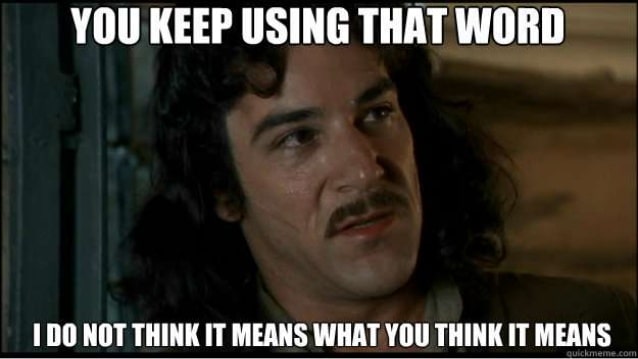
I almost titled this article the “Inigo Montoya Guide to Brand”
As in, “You use that word a lot. I do not think it means what you think it means.”
Such is the case with “brand,” and this exercise will show you why in thirty seconds or less:
Without using Google, name off as many brands of hearing aids as you can.
How many could you come up with?
Typically, the answer is either zero or one — Beltone — and that’s because Beltone actually did some mass media advertising back in the early 80s.
Technically, if you have a company with a name and a logo, you have a “brand.”
But actual brands are mental associations that live in the minds of customers.
In other words, all of these hearing aid companies — Starkey, Nuear, Unitron, Oticon, etc— think they have actual brands, but they don’t.
So if people don’t know about your company and couldn’t name your company when asked to list off brands in your category, then guess what?
You don’t have an actual brand.
Your company has no share of mind.
Taking it further, if people can name your brand, but don’t associate anything with the name, then your Top of Mind Awareness isn’t worth much.
See the importance of understanding the difference between “brand” and brand?
And a similar thing happens with “branding.”
In one sense, branding is creating a defined identity and personality for your business that gets expressed in everything you do, from how you wrap your trucks, to your uniforms, to the language you use when talking to customers, to your website design and copy, to your advocated positions, etc.
Branding is what helps people understand the kind of company you are and how they should feel about you.
This is something every company should be doing regardless of whether or not they are engaged in mass media branding campaigns.
But most of the time, when people talk about “branding,” they mean running a mass media brand-building campaign.
And even then, they can’t tell you what they hope to achieve with their brand-building campaign other than “more sales” or “increased market share.”
The goal of a branding campaign ought to be
“To make people think of us first and feel the best about us when they need what we sell.”
Notice that we’re aiming both for unaided recall AND a positive association designed to win the sale before it happens.
Once you understand the differences between a “brand” and a brand, and between branding and mass-media branding campaigns, it’ll help your marketing efforts immeasurably.
And all thanks to a 30-second exercise.
- Are You Paying for Too Much for the Wrong Keywords? - July 15, 2024
- Dominate Your Market Like Rolex — 4 Powerful Branding Lessons - July 3, 2024
- Military-Grade Persuasion for Your Branding - June 25, 2024
